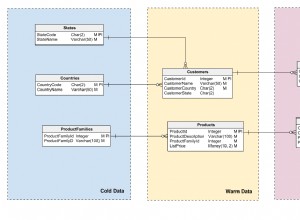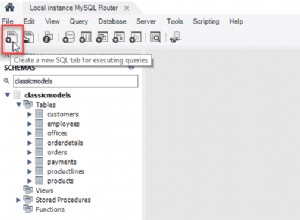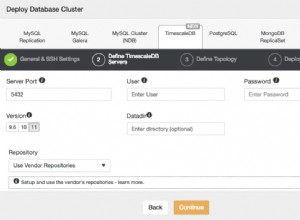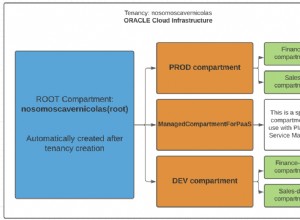Sie können alles in einem erledigen SQL-Befehl mit CTEs.
Unter der Annahme von Postgres 9.6 und dieses klassische Many-to-Many-Schema (da Sie es nicht bereitgestellt haben):
CREATE TABLE questions (
question_id serial PRIMARY KEY
, title text NOT NULL
, body text
, userid int
, categoryid int
);
CREATE TABLE tags (
tag_id serial PRIMARY KEY
, tag text NOT NULL UNIQUE);
CREATE TABLE questiontags (
question_id int REFERENCES questions
, tag_id int REFERENCES tags
, PRIMARY KEY(question_id, tag_id)
);
Zum Einfügen einer Single Frage mit einem Array von Tags :
WITH input_data(body, userid, title, categoryid, tags) AS (
VALUES (:title, :body, :userid, :tags)
)
, input_tags AS ( -- fold duplicates
SELECT DISTINCT tag
FROM input_data, unnest(tags::text[]) tag
)
, q AS ( -- insert question
INSERT INTO questions
(body, userid, title, categoryid)
SELECT body, userid, title, categoryid
FROM input_data
RETURNING question_id
)
, t AS ( -- insert tags
INSERT INTO tags (tag)
TABLE input_tags -- short for: SELECT * FROM input_tags
ON CONFLICT (tag) DO NOTHING -- only new tags
RETURNING tag_id
)
INSERT INTO questiontags (question_id, tag_id)
SELECT q.question_id, t.tag_id
FROM q, (
SELECT tag_id
FROM t -- newly inserted
UNION ALL
SELECT tag_id
FROM input_tags JOIN tags USING (tag) -- pre-existing
) t;
dbfiddle hier
Dadurch werden Tags erstellt, die noch nicht vorhanden sind.
Die Textdarstellung eines Postgres-Arrays sieht so aus:{tag1, tag2, tag3} .
Wenn das Eingabe-Array garantiert unterschiedliche Tags hat, können Sie DISTINCT entfernen aus dem CTE input_tags .
Detaillierte Erklärung :
- Fügen Sie mit Postgres Daten in 3 Tabellen gleichzeitig ein
- Wie verwendet man RETURNING mit ON CONFLICT in PostgreSQL?
- Wie implementiert man eine Viele-zu-Viele-Beziehung in PostgreSQL?
- Einfügen nicht möglich:FEHLER:Array-Wert muss mit "{" oder Dimensionsinformationen beginnen
Wenn Sie gleichzeitige Schreibvorgänge haben Sie müssen möglicherweise mehr tun. Betrachten Sie insbesondere den zweiten Link.




